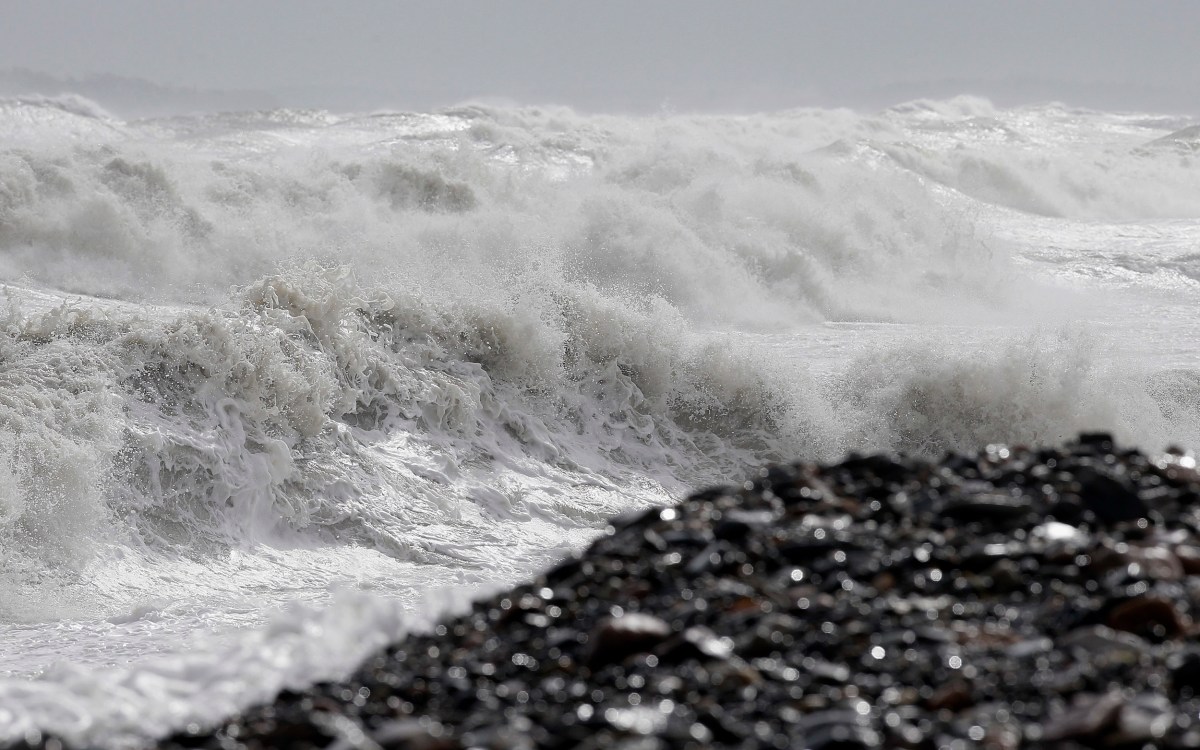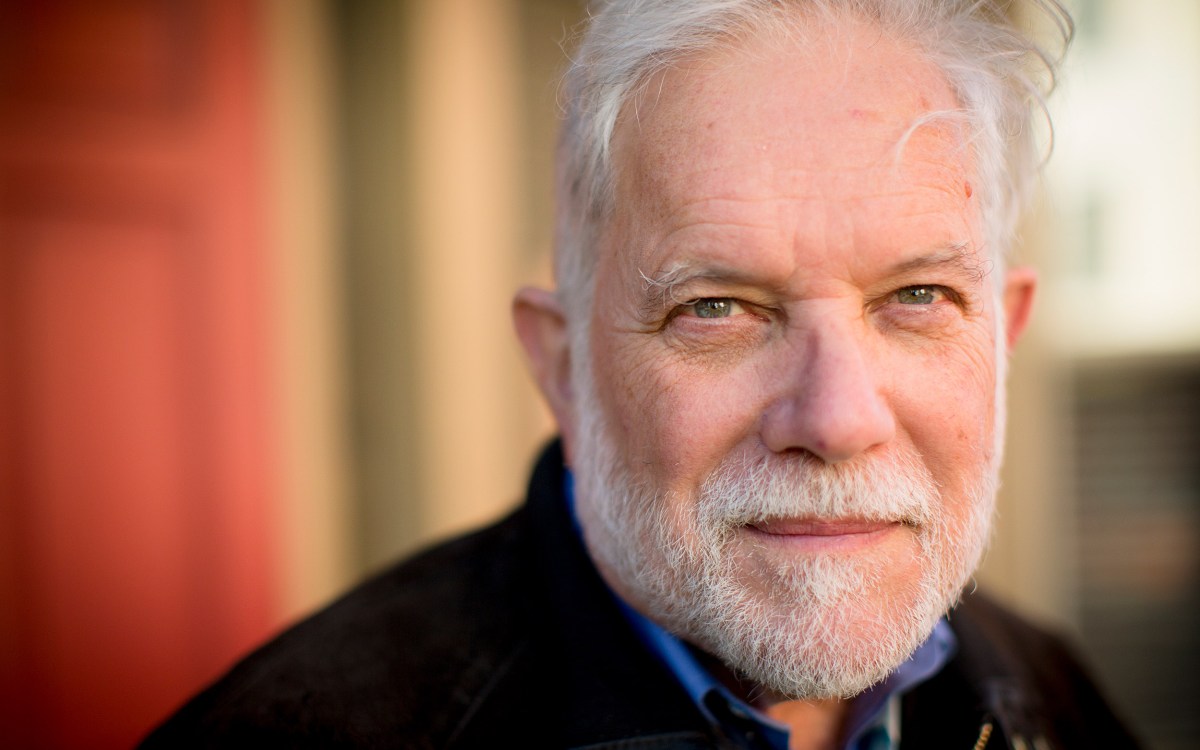Protecting P-town

GSD students imagine approaches to climate change that save the town’s quintessential New England character
Provincetown, Mass., has long captivated imaginations and lured souls to the tip of Cape Cod — from the Wampanoag people to the Mayflower Pilgrims who docked there before heading to Plymouth, to Henry David Thoreau, playwright Tennessee Williams, and poet Mary Oliver.
Surrounded by expansive natural wetlands and beaches, P-town, as it’s commonly known, was a busy commercial fishing port through the 19th century. It became better known as a Bohemian summer enclave and theater/arts colony through the 1940s, before its rebirth in the 1970s as an idyllic LGBTQ summer mecca that today attracts visitors from around the world.
Preston Scott Cohen, Gerald M. McCue Professor in Architecture at Harvard Graduate School of Design, readily admits he’s been smitten by P-town since the late 1980s, when he first started visiting regularly. Despite its remote location, the town has a rich architectural tradition and an appreciation for its history, with examples of diverse building styles, from tiny fisherman’s shacks to a Walter Gropius home, that date back to the 1700s.
Like many, Cohen has grown sentimental and protective of the town over the years. So when Hurricane Sandy flooded cities and towns along the East Coast in 2012, causing more than $70 billion in damage, he said the prospect of the ocean washing away his beloved oasis became too real.
“I was really upset to imagine that these buildings that are quite aged and have so much character would someday be replaced by buildings I would not be happy about or by some kind of rebuilding,” he said. “I didn’t want to imagine this loss of these buildings.”
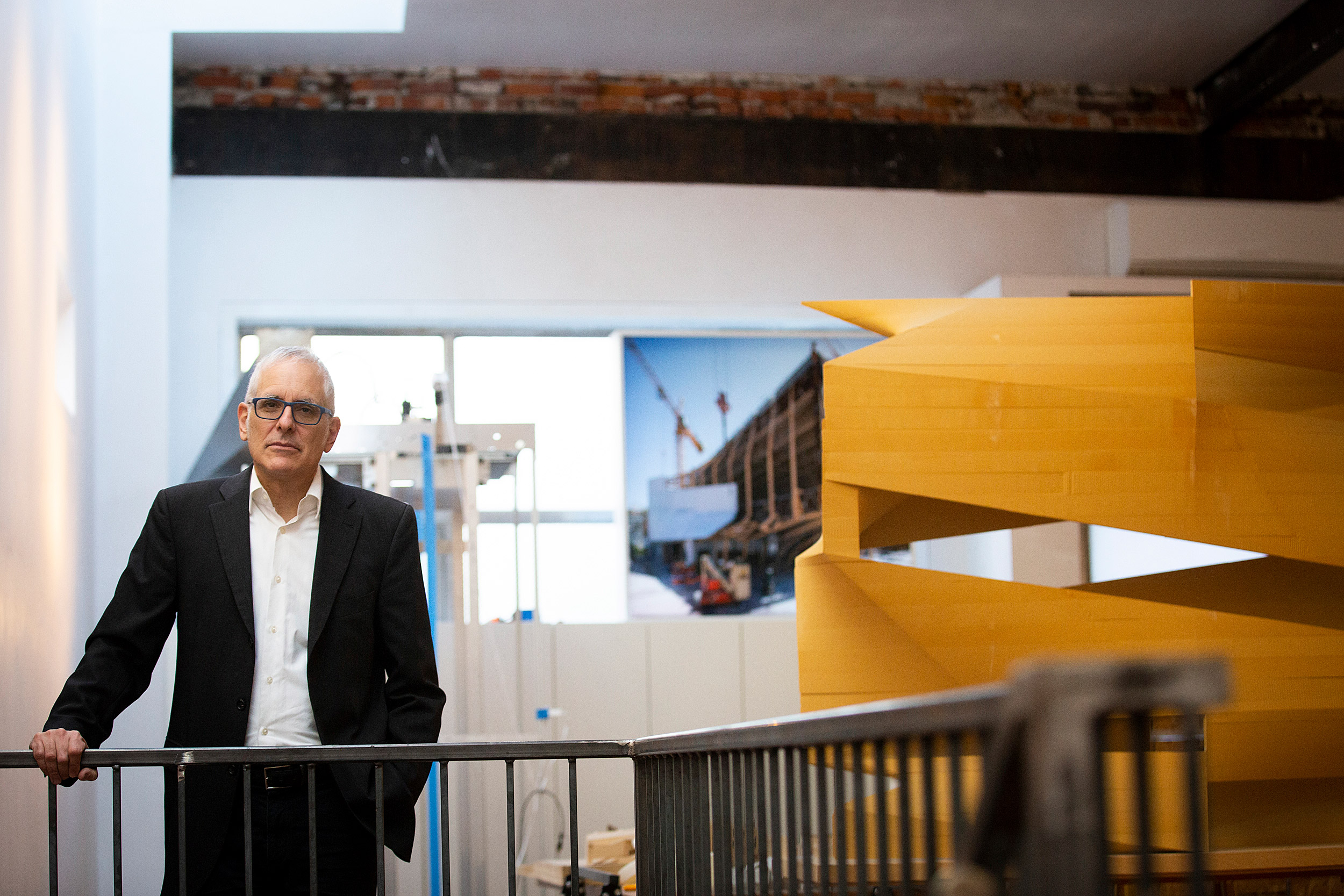
Stephanie Mitchell/Harvard Staff Photographer
“My goal was to find models to build on the idiosyncrasy and intricacy of the city.”
Preston Scott Cohen (pictured above)
With two-thirds of the town surrounded by federally protected natural seashore, building has long been tightly confined to the narrow crescent of land facing Cape Cod Bay, creating what Cohen calls an “intimacy” and “spontaneity” town-wide that’s felt most acutely on Commercial Street.
Cohen started thinking about how the town could fall victim to a catastrophic weather event and, in a misguided attempt to fortify itself physically or hastily rebuild damaged structures with only functionality as a guide, could lose the unique architectural, cultural, and natural elements that make it so special.
“I think for me the trauma of imagining it has so much to do with my love for the architectural character, the particular scale of the city, how coherent and close-knit an experience it is, and the ‘land’s end’ nature of it as a city which has this long tradition as a place of artistic culture,” said Cohen.
Wanting to find a way to contribute, Cohen led a studio for GSD architecture students last semester to begin studying how Provincetown might ward off the oncoming seas while still retaining its history and the delicate interplay of the natural and human-made environment.
“The architecture, the urban form of the way it is laid out in that natural context, is just so exceptional, and if we’re going to look at the future, we have to hold that in our minds as much as we do the practical questions of contending … with the crises that the rising sea will bring,” he said.
Student projects took one of three approaches: attack the water by building on piers or lifts that could be raised and lowered; defend against the water by constructing levees or other short-term barriers to keep it at bay; or retreat from the shoreline to higher ground, moving inland or building towers that rise above water levels.
“My goal was that we would do two things,” Cohen said. “We’d go way out there and be very speculative … and also push ourselves … into a long-distant future where the water is quite high and the storm events are repeated and too much to deal with in the way we are now.”
Students imagined a new reality that locals would accept — one that integrated P-town’s cultural history, the unexpected juxtapositions of beaches, businesses, and private homes packed cheek-to-jowl, the moments of whimsy and natural beauty next to decay and the risqué — “everything that makes it wonderful.” They then came up with ideas that are “realistic enough” that people can see themselves living there.
“The thing I found so fascinating in Provincetown [is] there’s a lot of beautiful buildings,” said Ben Hait, M.Arch. II ’19, who proposed repositioning the harbor and floating buildings out over the water. “But the thing I found most beautiful wasn’t any one building, but rather the relationships between the buildings. And so that became a framework from which to change how I was thinking about design up until that point.”
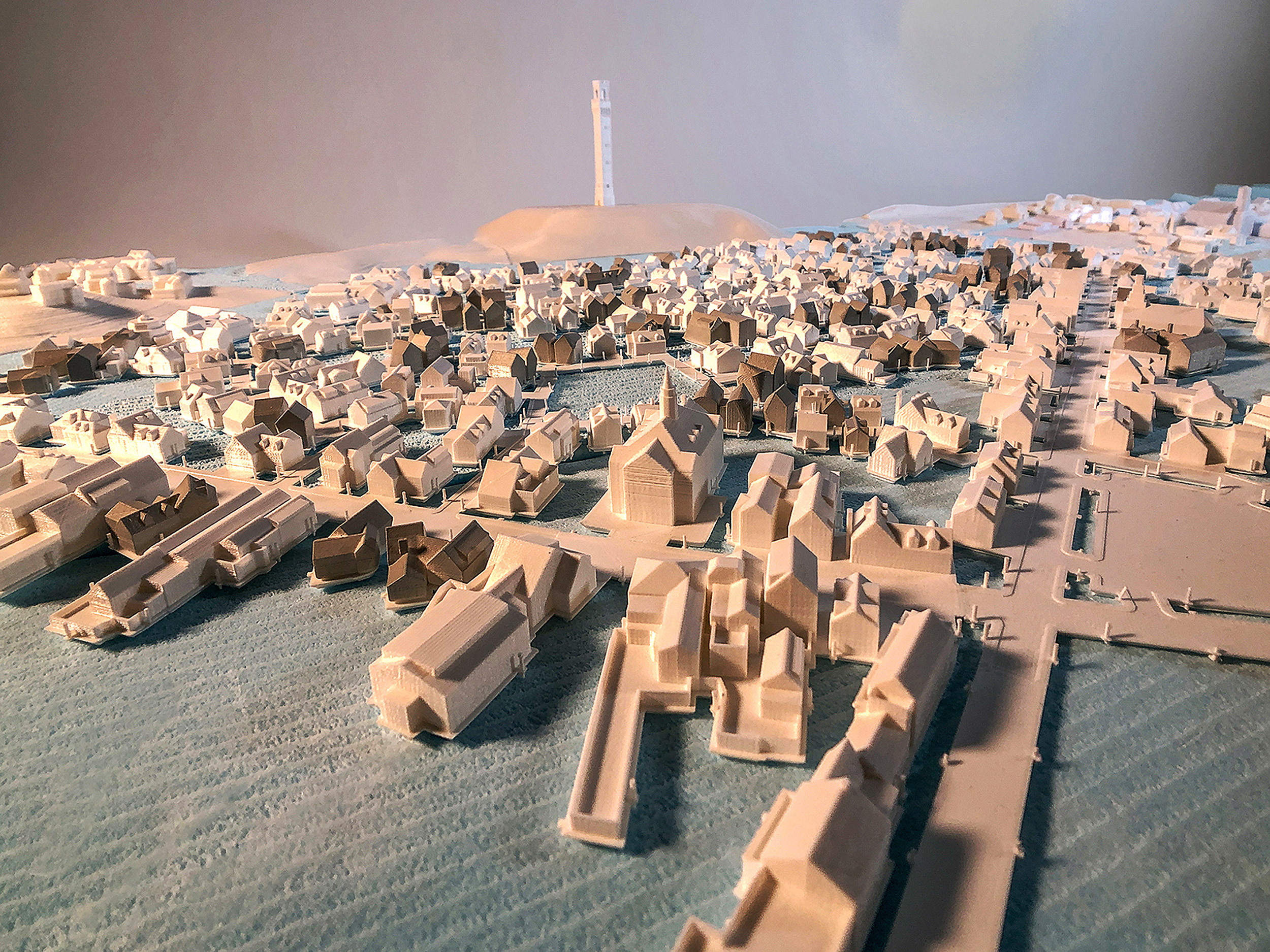
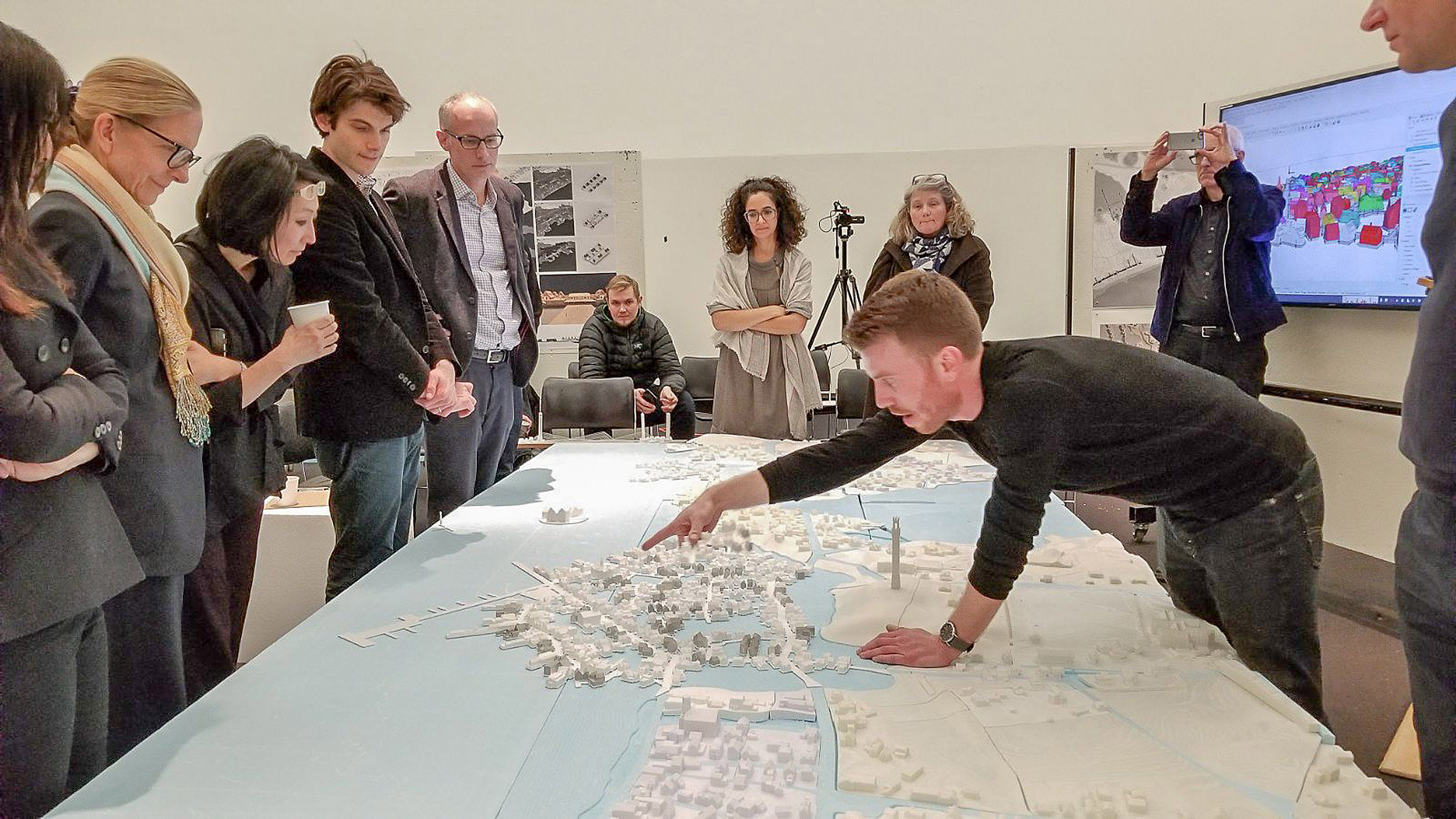
Ben Hait presents his project, which proposes repositioning the harbor and floating buildings out over the water.
Photos by Ben Hait (model) and Adrian Wong
Traditionally, Hait said, architects design site-specific buildings. “But this is a slightly different context,” he continued. “And so, when you’re designing many buildings, it’s the relationships between them that can come together to form something special or something unusual, and that became the genesis of my project.”
“The most remarkable feature of the town is a kind of quaint hyperdensity — the intimacy of neighbors looking into each other’s backyards, kitchens, and even bedrooms and bathrooms. I remember walking down the main thoroughfare and being startled to see somebody in their bed through their street-facing window,” said Ian Miley, M.Arch. AP ’20, who proposed tower-like structures rising from the water’s edge. “This kind of unusual social organization was also complemented by the sense of living in harmony with, but also at the mercy of, the sea and the dune system flanking the town. It was quite apparent how vulnerable P-town is to climatic events, but perhaps surprising to see a kind of celebration and embrace of that precarious situation.”
Miley said he found the studio “super successful from a pedagogical perspective,” even though it was admittedly experimental and no one, including Cohen, could precisely predict where things were headed. “We collectively imagined that architecture could take a proactive, as opposed to reactive, stance toward climate change.”
Hait agreed, noting that some “very exciting” ideas came out of the studio.
“It was a fascinating experience for me as a student because it was different scale of design thinking,” he said. “We are obviously exposed to a lot of curriculum around that idea, but there’s a scale to it [in P-town] that is distinctly architectural.”
Cohen has met with local officials to share student ideas and hopes to organize an exhibition of their projects in time for town’s 400th birthday celebration next year. He plans to host another studio on Provincetown’s rising seas incorporating landscape engineering questions that consider how environmental forces will affect the land’s shape, and have students consider how political forces might impact townwide efforts.
“My goal was to find models to build on the idiosyncrasy and intricacy of the city,” Cohen said. “I hope this can contribute to the discussion and help people to imagine collective solutions that are cognizant of a character of urban life that isn’t so overridingly planned as to neutralize all of that idiosyncrasy.”
The students — many of whom had never been to P-town — were asked to see the town through the eyes of the painters who still flock to the area to capture the wondrous natural light, ocean vistas, and ramshackle architectural charm.
“Most of the painters in Provincetown have looked at the architecture a lot, and that’s very moving for us architects because they brought all of those issues of the light and the effervescent character of it, the color of the light, the shadows,” he said. “It’s very romantic. That’s why I’m so passionate about rebuilding it the right way. We can’t have it be cold and aloof. We’ve got to rebuild it so that the [Edward] Hopper of 100 years from now will paint. That’s what I want.”



